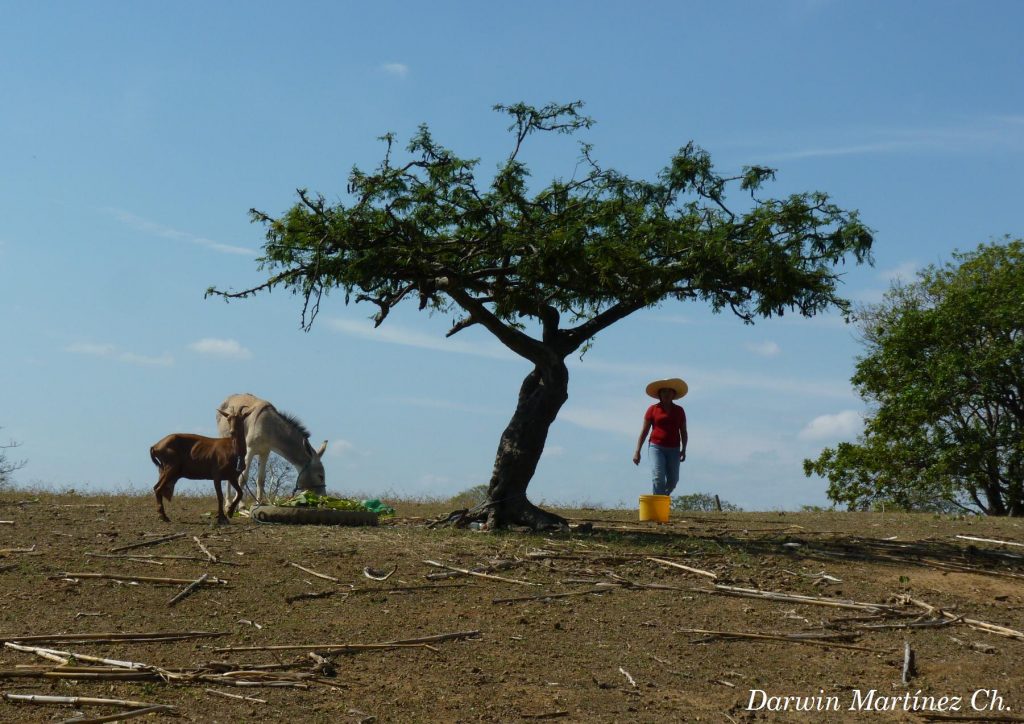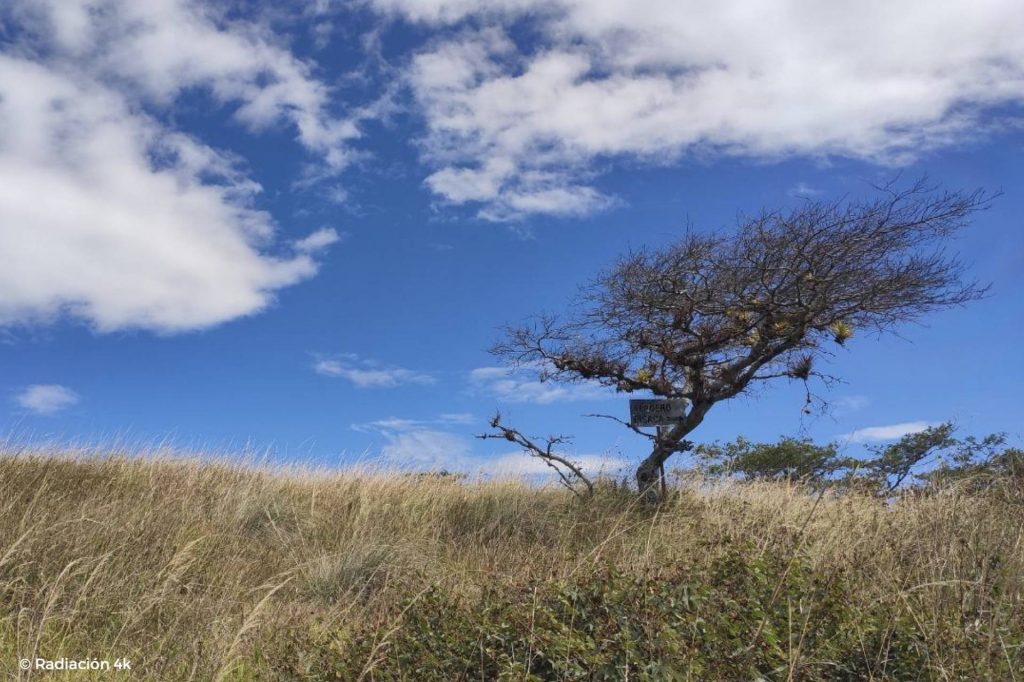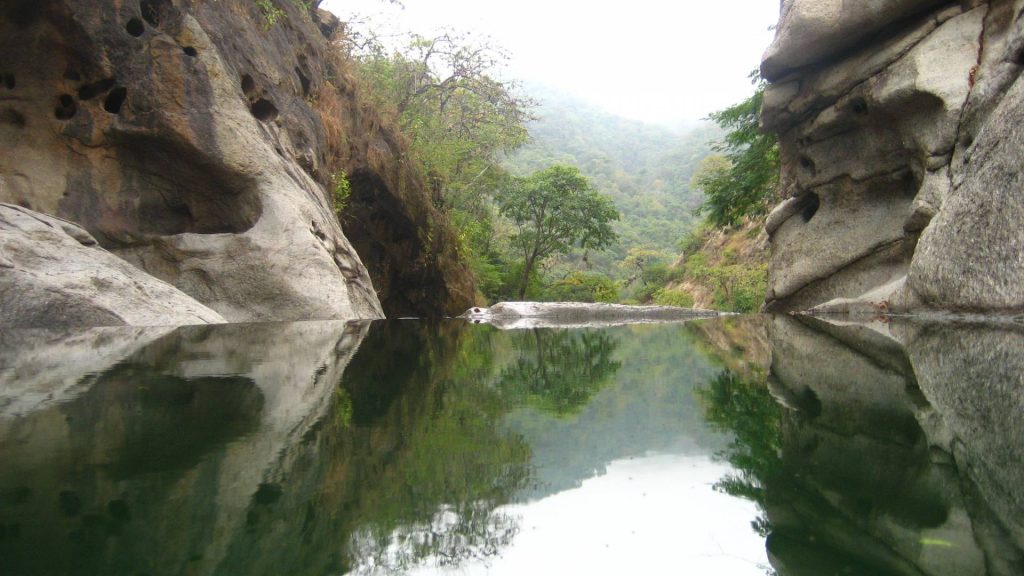From Forests to Faucets: Water For People As a Strategy For Conservation
03/22/2021
Strategic Area:
Water -
Content Type: Blog
Country:
Ecuador -
To achieve lasting conservation impact, Nature and Culture strategically harnesses the basic human need for clean, abundant water through water funds.
A bright green tree, reaching nearly 200 feet, towers over the dry landscape of southern Ecuador. It’s a ceiba, with green photosynthetic bark that allows the plant to keep growing even when its leaves have dropped.
Animals, too, have developed adaptations to the challenging dry season in Ecuador’s tropical dry forest. Insects and amphibians burrow into the ground and lie dormant until the rains return, while animals like howler monkeys change their diets with the seasons.
People, however, struggle with their water supplies; during the eight to nine-month dry season, some communities have less than 30 minutes of water per day.

Water shortages plague many cities and towns across southern Ecuador because of rapid population growth. Climate change causing both droughts and floods along with poor forest management where water supplies originate has exacerbated the problem. Forests act like sponges, retaining and slowly releasing water for an even supply throughout the year. Unfortunately, agricultural expansion and other land-use changes have resulted in significant deforestation, reducing water quantity and quality.
FORAGUA was created to solve this problem. The concept of a municipal water fund in southern Ecuador was first introduced by Nature and Culture International in 2007 to fund forest and watershed protection and finance ongoing management. Over the next two years, we actively circulated the concept with local governments, communities, and water users throughout the region. In 2009, local municipalities, together with our team in Ecuador, signed a trust agreement with the National Financial Corporation as trustee, creating FORAGUA.
The municipal water fund model has been one of our most unique and successful conservation strategies to date. Founded in 1997, Nature and Culture conserves Latin America’s most biologically and culturally diverse ecosystems. Focusing our work in the Andes and Amazon regions of South America, we work with local communities and authorities to create legally protected areas that ensure sustainable, long-term management. To date, Nature and Culture has placed 21 million acres of endangered ecosystems into fully protected status.

We believe that conservation of vast forests protects vital elements of a better world — species diversity, natural resources, carbon storage, and indigenous cultures. Protecting these elements is not only important for the health of the planet but also our moral obligation to the environment.
Based on the Half-Earth Project mapping work, a biodiversity conservation effort born from E.O. Wilson’s book “Half-Earth,” there are 2,870 species that call Ecuador home, 352 of which are endemic, meaning they are found only in Ecuador. Currently, only 19% of Ecuador’s lands are under protection, leaving a lot of work to be done to ensure species, the foundation of a healthy environment, are sufficiently protected.
To achieve lasting conservation impact, Nature and Culture strategically harnesses the basic human need for clean, abundant water through water funds.
FORAGUA first collects water use fees from municipalities and communities. The funds are then used to protect forested watersheds in the highlands which in turn provide clean and accessible water to communities below.

To enroll in FORAGUA, a municipality must pass a legal ordinance (1) establishing municipal protected areas within its jurisdiction and (2) establishing the municipality’s ability to collect a fee from water users within its jurisdiction. These water fees are aggregated and passed to the water fund. Municipalities within FORAGUA are also required to prepare an investment plan to invest funds exclusively in conservation and management activities.
FORAGUA is the first locally-funded water program for watershed management in the country. As of December 2020, the 11 municipalities enrolled in FORAGUA had created 718,046 acres of protected areas. FORAGUA has also raised more than $5 million for conservation and management activities like reforestation and fencing to keep livestock from contaminating water sources.
The protected areas established under FORAGUA serve several functions for biodiversity: protecting critical remnants of endangered ecosystems, serving as buffer zones that extend protected areas, and increasing landscape connectivity by conserving forested corridors. Some of the reserves protect and restore Andean cloud forests, considered “a biodiversity hotspot,” one of Earth’s richest ecosystems. Other protected areas span the species-rich dry forests of the southern Ecuadorian Andes.
Last year, Nature and Culture and the Paltas Municipal Council protected 41,040 acres of tropical dry forest, Ecuador’s most threatened ecosystem, under FORAGUA. Paltas Municipal Protected Area conserves habitat for threatened wildlife like the cougar (Puma concolor) and grey-cheeked parakeet (Brotogeris pyrrhoptera) as well as water sources for 10,000 people. Thanks to funded conservation and management efforts in the region, residents of nearby towns have a water supply for an additional hour each day and have access to clean water year-round.
“Now we grow a lot of plants – yucca, plantains, fruits. Now we can water growing areas where it was not possible before,” said Mercedes Omaida Carrión, a local farmer.
FORAGUA and other water funds supported by Nature and Culture create local mechanisms and capacity that achieves land, water, and biodiversity conservation. In doing so, they build a sustainable response to the growing threats to nature, helping ensure a healthy planet now and for generations to come.


